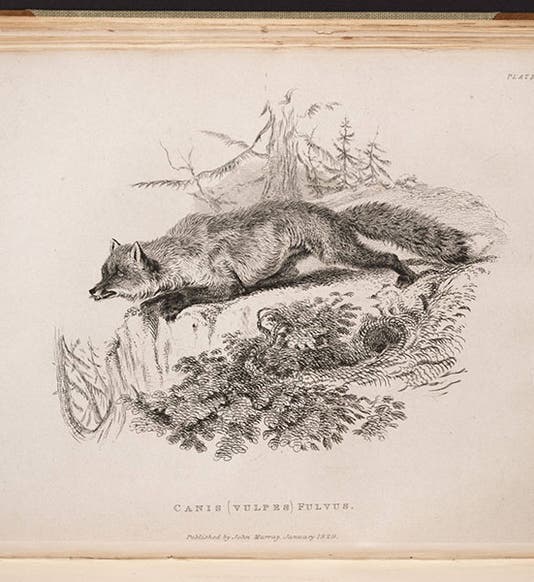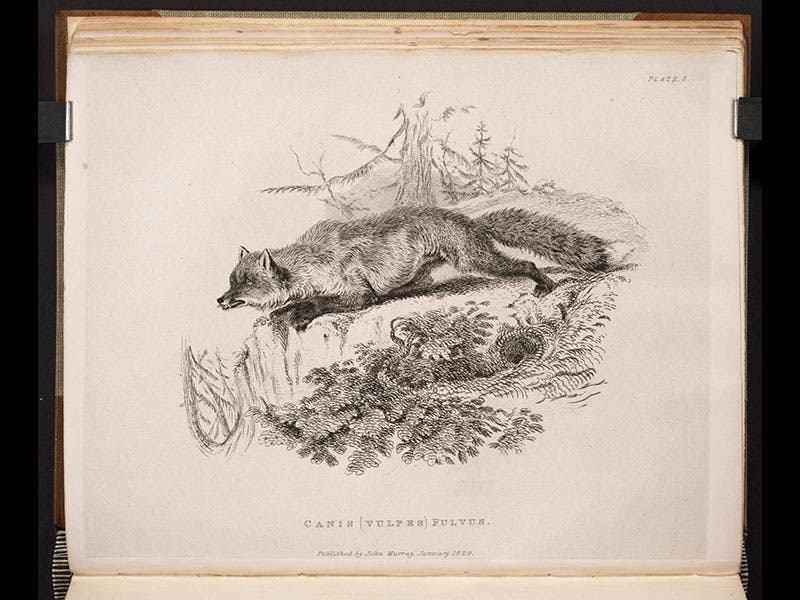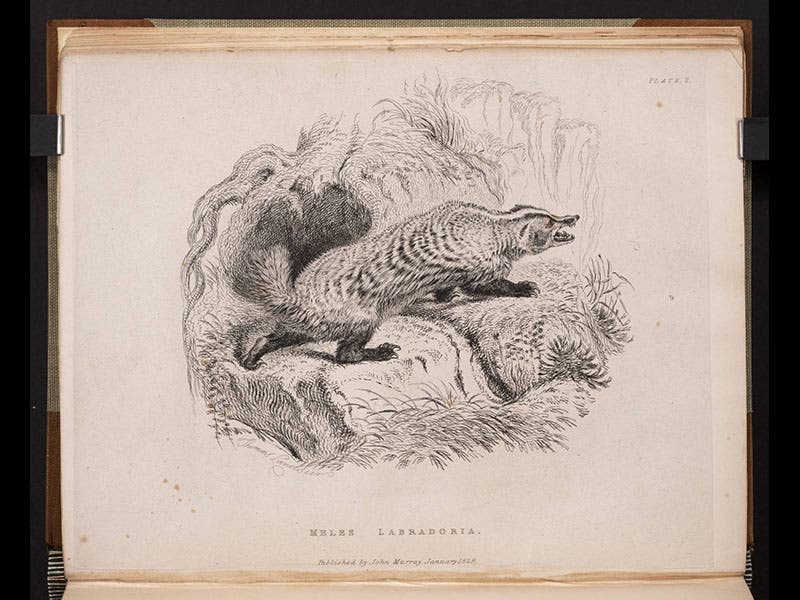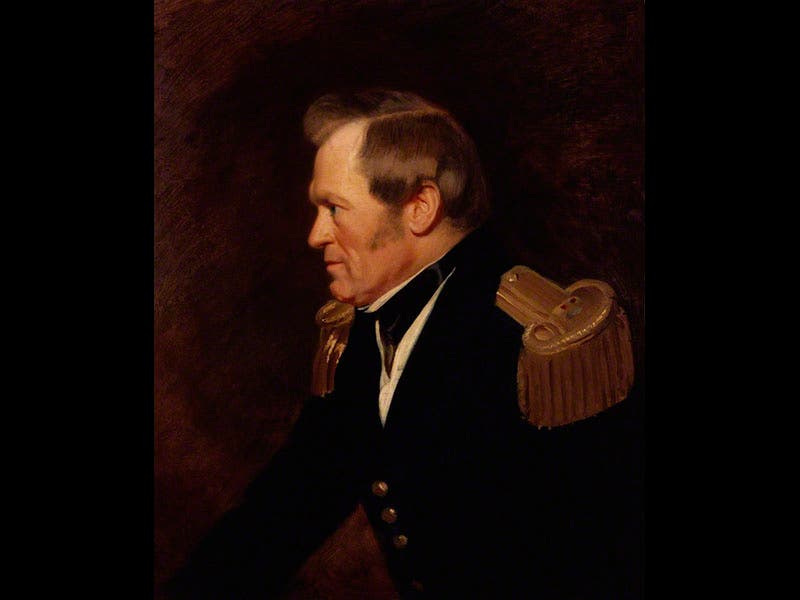Scientist of the Day - Sir John Richardson
John Richardson, later Sir John, a British surgeon in the Royal Navy, was born Nov. 5, 1787. From 1819 to 1822, and again from 1825 to 1827, Richardson accompanied John Franklin on his attempts to discover a Northwest Passage by travelling overland through what is now Canada to the Arctic sea. The two men and their companions traveled about 8000 miles on the two expeditions, through what was then unexplored territory for Europeans. Richardson was the naturalist on both expeditions, and after the second journey, he compiled a multi-volume Fauna Boreali-Americana, with beautiful illustrations of the animals and birds of the Arctic. Three of the etchings from this work can be seen above: an arctic fox, a pronghorn, and a badger, and two more were included in our 2008 exhibition, Ice: A Victorian Romance.
Richardson worked at a naval land hospital until 1848, when, at the age of sixty, he departed for one more Arctic overland adventure, this time in search of his friend Franklin, now also Sir John, whose ships, the Erebus and Terror, had been missing since 1845, somewhere in the Arctic archipelago. Neither Richardson nor any of more than 25 other search expeditions were successful, for Franklin and his crew of 128 had all perished in the frozen north.
Richardson’s portrait was painted by Stephen Pearce in 1850, and then, because Richardson was involved in the search for Franklin, he was included by Pearce in a larger group portrait, usually called the The Arctic Council (1851). Once you have seen the individual portrait of Richardson by Pearce, it is not too hard to find Richardson in the group portrait, the second figure from the right, since Pearce simply copied from one portrait to the other. Both paintings are in the National Portrait Gallery, London.
Dr. William B. Ashworth, Jr., Consultant for the History of Science, Linda Hall Library and Associate Professor, Department of History, University of Missouri-Kansas City. Comments or corrections are welcome; please direct to ashworthw@umkc.edu.











